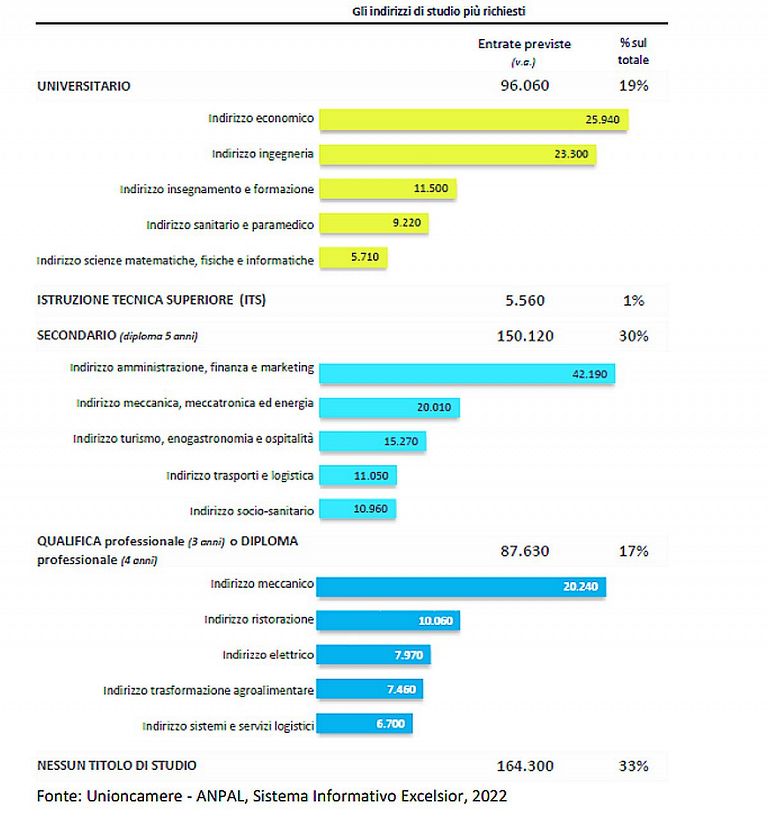This is the data from the Excelsior Information System Annual Bulletin, prepared by Unioncamere and Anpal: Last year, the demand for graduates exceeded “780,000”, 15.1% of the total contracts, but almost half (47% of these profiles) “are difficult to find”, for companies the search can take up to 4 months.
“The lack of matching between supply and demand is one of the major bottlenecks on the Italian labor marketAccording to Unioncamere President Andrea Prete. One of the most requested (and sometimes unavailable) profiles are healthcare graduates paramedic (with a finding difficulty of 65%), followed by those of mechanical engineering electronics and information (61%), Science Mathematics, Physics and Information Technology (60%), graduates in electronics and electrical engineering (60%) and such in mechanicsMechatronics and Energy (56%).
At the top of the ranking, however, is the business address: Last year there were almost 207,000 “expected registrations”, followed by the teaching and training course with an expected 116,000 registrations and thus the health and rescue service course (over 76,000).
Between diplomasOf particular note are the areas specializing in administration, finance and marketing (almost 440,000), those specializing in tourism, gastronomy and hospitality (226,000) and those specializing in mechanics, mechatronics and energy (153,000).
UNIVERSITY MEDICAL TEST
“lack of applicants”
The lack of candidates is the most frequently cited reason by companies (27.8%), the report goes on to say, followed by insufficient preparation (13.5%) and other reasons (4.3%). Especially hard to find: management (66.1%), skilled worker (61.9%), technician (51.6%), plant operator (49.0%), intellectual, scientific and highly specialized professions (47.5%), qualified professions in commercial activities and services (41.0%). At least 4 months, the average research time required to cover the deficiencies classified by the companies as “hard to find”.
 Unioncamere – Anpal, Excelsior 2022
Unioncamere – Anpal, Excelsior 2022 Courses required by companies in 2022
Almost half: fixed-term contracts
The fixed-term employment contract is the most frequently proposed form of employment 208,000 units, which is 41.3% of the total. This is followed by permanent contracts (122,000 units, 24.3%), fixed-term contracts (74,000, 14.7%) and other non-employee contracts (44,000, 8.8%). 25,000 new hires (5.0%) are training positions, 19,000 (3.7%) and 10,000 new hires (2.1%) are cooperation agreements and other employment contracts.